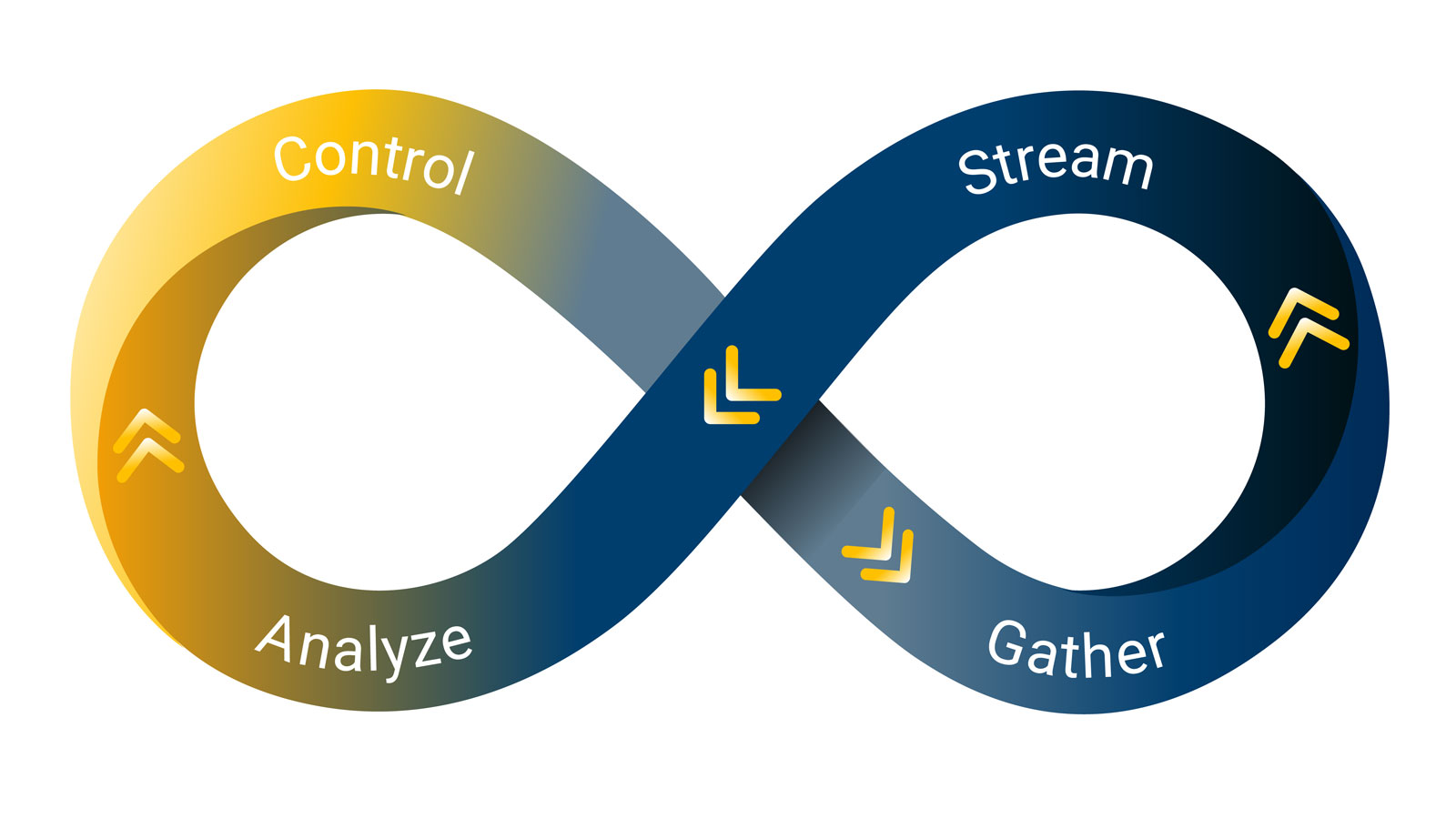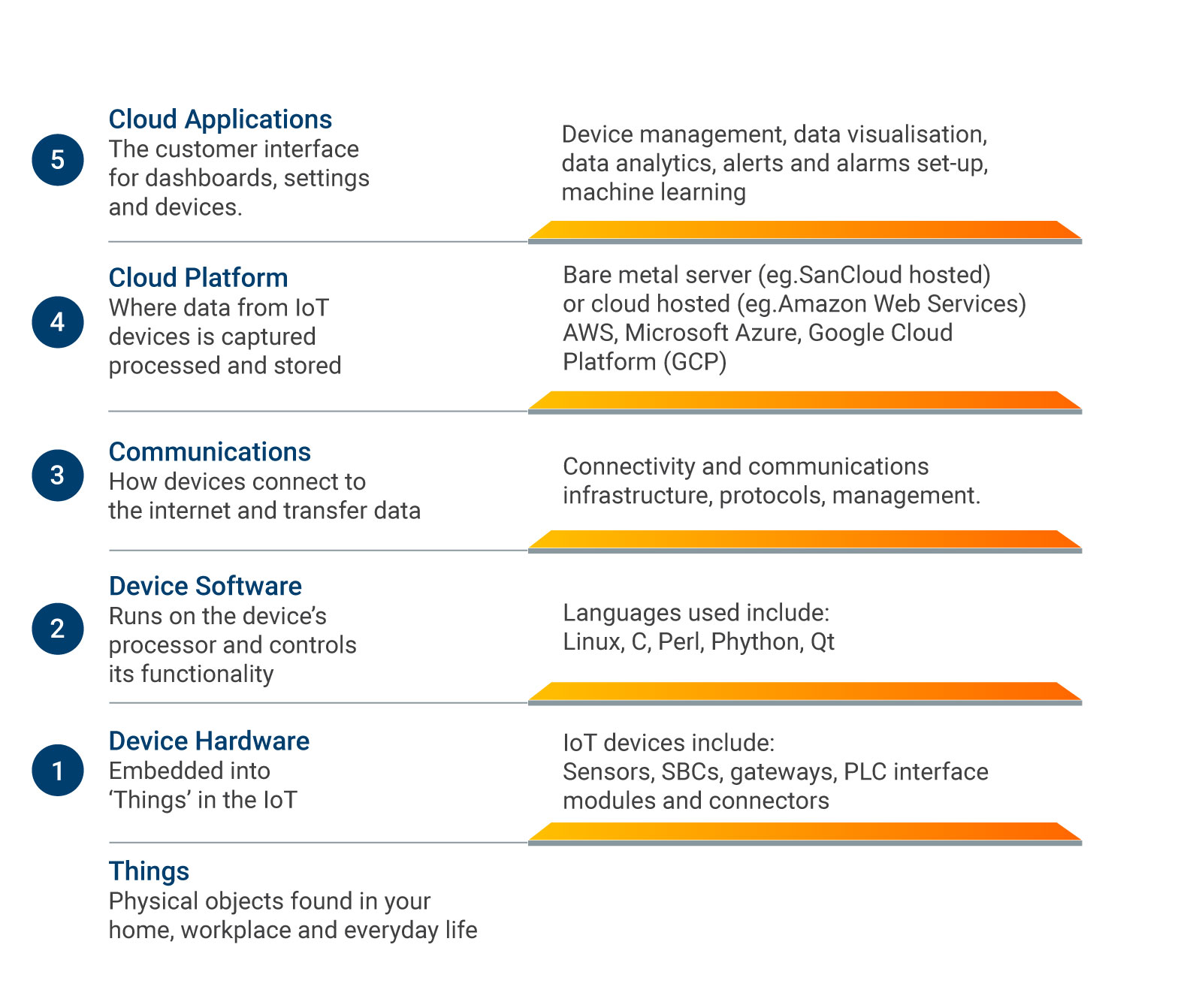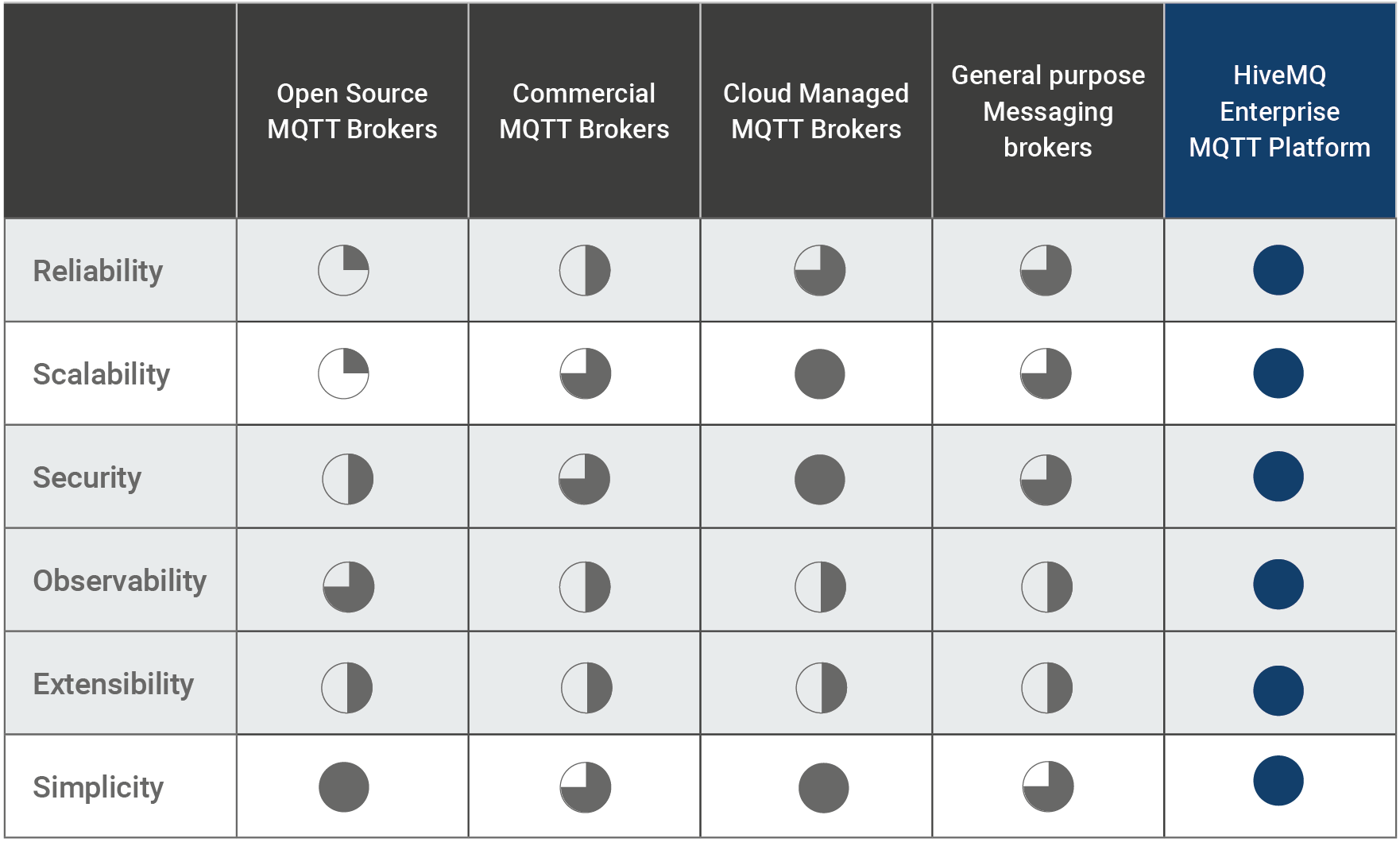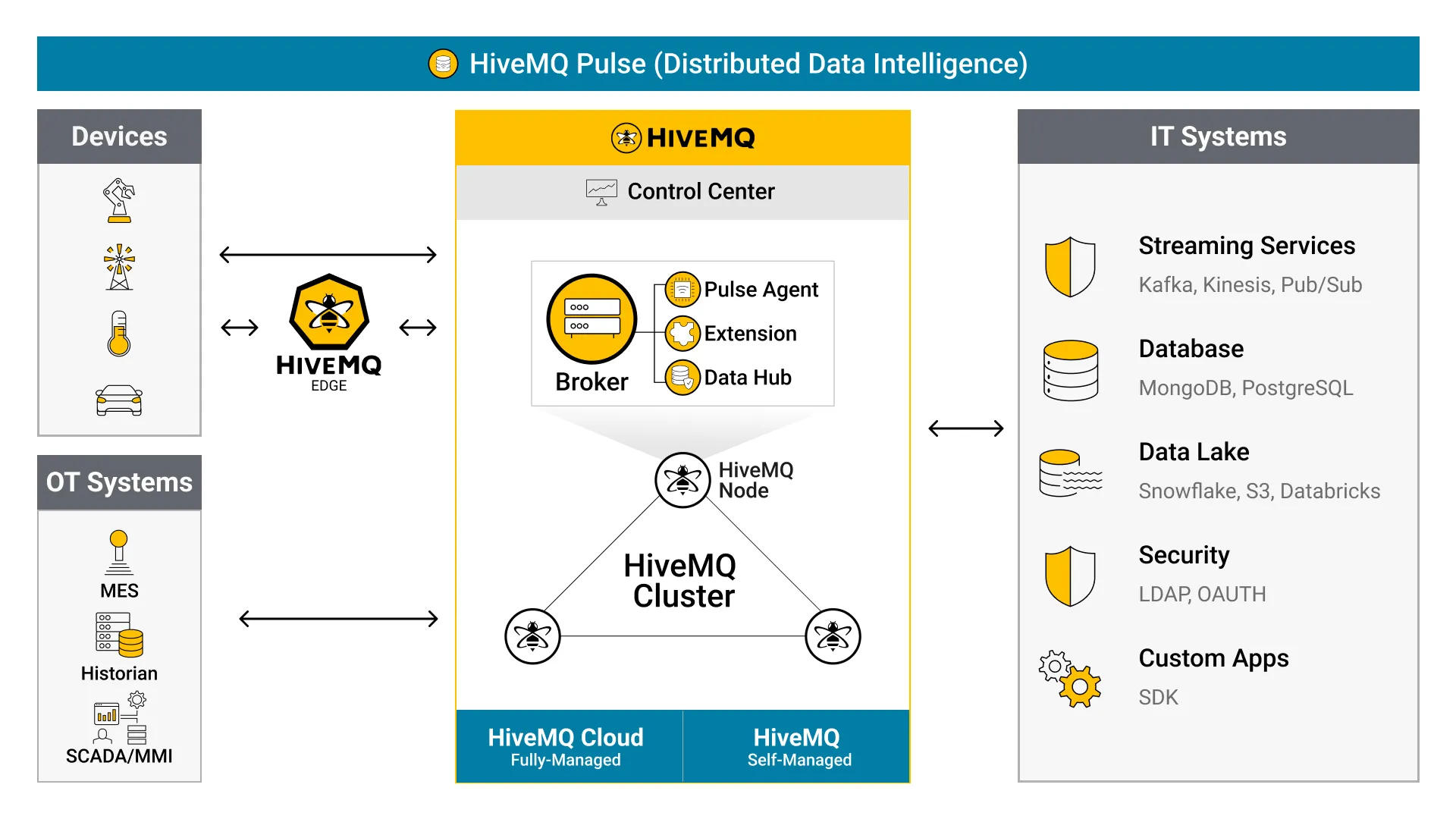2024 Buyer’s Guide: MQTT Platforms
Building the Right Foundation for a Data-Driven Enterprise
Over the past several years, we’ve seen unprecedented growth in the connected world and data driven decision-making. Chances are you found this guide because you are trying to figure out how to effectively use data to build new connected products, achieve more efficient operations, or improve the customer experience. Successful IoT projects and digital transformation depend on having the right data in the right place at the right time.
No matter what you want to do with your data, or whether you are an IT Architect, an Engineer, or a Head of Digital Transformation, you need a plan for putting the right technology infrastructure and IoT protocols in place for reliable, scalable, and secure data movement. We’ve written this guide to help you make an informed purchase decision for a data movement platform that meets your technical and organizational needs. Reading will help you understand:
The enterprise challenges and priorities for moving data
Why MQTT is the de facto standard and ideal protocol for IoT
The MQTT platform landscape today
How to lay the right foundation for a data-driven enterprise
Working to become a data-driven organization can yield many benefits:
Increased efficiency of operations
Elevated productivity
Reduced and predictable costs
Automated decision-making
Improved worker safety
New revenue streams
Business agility
Why Data Flow Matters
Before we talk about laying the right foundation and solving challenges for a data driven business, let’s discuss the data flow and where this function fits in the larger IoT strategy. There are several moving pieces from devices to sensors, gateways to data storage, and enterprise analytics tools to cloud platforms - and they all feed into each other. Data movement, or the messaging infrastructure, underpins this flow, which is designed to move data to and from connected devices across networks and cloud platforms.
 Successful IoT deployments enable a continuous loop of controlling devices, gathering data at the edge, streaming it to Kafka (or another data pipeline), analyzing it in the cloud, then sending that data back to the edge to make improvements. This continuous and real-time data flow means data can be pushed back to the edge to make better decisions which leads to benefits like increased efficiency and reduced costs.
Successful IoT deployments enable a continuous loop of controlling devices, gathering data at the edge, streaming it to Kafka (or another data pipeline), analyzing it in the cloud, then sending that data back to the edge to make improvements. This continuous and real-time data flow means data can be pushed back to the edge to make better decisions which leads to benefits like increased efficiency and reduced costs.
The entire IoT tech stack should be built to support successful device-to-cloud communications and real-time insights and requires a central nervous system that ensures reliable, scalable, and secure data movement. Here is one way to see the IoT tech stack, and our focus in this guide is on level three, the communications layer.
 Let’s get into the specific challenges in building IoT applications and how to solve this communications, or data movement layer, with an MQTT platform.
Let’s get into the specific challenges in building IoT applications and how to solve this communications, or data movement layer, with an MQTT platform.
Enterprise Challenges for IoT Data Movement
Chances are you’ve already seen firsthand how difficult it can be to solve the data piece of the IoT puzzle. According to Transforma Insights, connected IoT devices will grow to 29.4 billion by 2030. These devices produce a lot of data that needs to be collected and moved to an on-premise data center or the cloud so it can be analyzed and put to use. Following are the common challenges companies face as they move data so it can be used to reap all of the promised benefits of IoT.
Heterogeneous devices and data sources
Unreliable networks and latency
Escalating costs of network bandwidth
Difficulty finding and troubleshooting issues
Lack of bidirectional connectivity
Data silos prohibiting OT - IT convergence
You need a solution that solves all of these challenges with a central nervous system that acts as a go-between for data producers and consumers. First, let’s look at your business priorities for such a solution, and then we’ll dive into why an MQTT platform is the answer.
Enterprise Priorities for IoT Data Movement
We’ve talked about the technological challenges, but you also have several business priorities to balance as you adopt a solution for moving IoT data. While each industry may put these in a slightly different order, the needs are virtually the same across use cases, from manufacturing to connected cars to energy. The messaging infrastructure you choose should complement these business needs so you can build a seamless and future-proof foundation for your IoT-powered applications and data driven business.
The Need for IoT Standardization
The challenges with data movement bring up one common thread: the need for standardization in IoT. You can see how many baseline issues, like heterogeneous devices, lack of bi-directional connectivity, and data silos, would be solved with open and accepted industry standards.
Building an architecture on open IoT standards provides several benefits:
You can build value on top of an open standards ecosystem to reduce integration work and time-to-market.
You can choose from several vendors who support the standard, which forces vendors to focus on adding value and functionality to differentiate their products.
You protect your investment and eliminate vendor lock-in so your IoT deployment can be agile and flexible as the market and your use cases evolve.
MQTT, in particular, has been widely adopted as the de facto standard protocol for moving data in IoT. We recently worked with IIoT World on a survey of manufacturing industry professionals, which found that 55% of them consider MQTT essential to fulfilling their IoT strategy. We’ve built our product and business around it and you can visit our MQTT page to learn more about why you should too.
Companies are choosing to standardize on MQTT because it:
Reports by exception, and is lightweight and efficient
Supports bi-directional messaging between device and cloud
Scales to millions of connected devices simultaneously
Works well over unreliable networks with support for persistent sessions
Enables security, so it works with TLS and common authentication protocols
The technical benefits of MQTT drive the following business benefits:
Reduced network costs thanks to small message sizes and reports by exception
Improved customer experience due to reliable message delivery
Reduced costs from data loss thanks to MQTT message queueing
Faster time-to-market since the client/broker relationship ensures rapid iteration
The MQTT Broker Landscape
Once you decide to standardize on the MQTT protocol for IoT messaging, you need an MQTT broker to enable the instant, bi-directional push of data between devices and enterprise systems. The MQTT broker sits at the heart of IoT deployments, handling communication between millions of connected MQTT clients. Here’s a high-level view of the MQTT broker landscape and how each type handles the enterprise requirements for IoT data movement.

For more information on the types of MQTT brokers and a detailed comparison, read our blog post: MQTT Broker Comparison – Which is the Best for Your IoT Application?
What Sets HiveMQ Apart
Now that you understand the challenges for data movement, why MQTT is the ideal protocol, and what the MQTT broker landscape looks like, let’s dive into what makes HiveMQ the best choice for enterprise-grade IoT deployments.
HiveMQ is an enterprise MQTT platform that underpins your business critical systems to securely move data between devices and the cloud at enterprise scale. HiveMQ is easy-to-deploy anywhere, on-premise, or in the cloud, to connect devices to enterprise systems for seamless data movement with MQTT. We help you solve all of the technical challenges of data movement while satisfying every enterprise business priorities in one premium platform.

HiveMQ offers:
Business Critical Reliability: HiveMQ is built with redundant clustering technology and advanced disaster recovery tooling that allows a system to operate continuously.
End-to-End Security: Data security is a top priority, and HiveMQ includes end-to-end encryption and configurable security controls to ensure the applications and data are fully secure.
Scalability to Support Growth: HiveMQ scales linearly and helps IoT applications efficiently support millions of connected devices and tens of thousands of messages per second.
Observable Insights: IoT demands transparency and observability, and HiveMQ offers open standard tools, supports Open Telemetry, and comes with 1500+ metrics to help monitor, troubleshoot, and confidently operate the application.
Flexible Integration: HiveMQ seamlessly integrates data into enterprise applications and infrastructure like Apache Kafka. Customers spend less time writing and managing integrations and can focus resources on their core business.
Simple-to-Deploy: HiveMQ is simple to install and operate, and flexible to deploy either on-premise, in any cloud, or via the fully-managed and feature-rich HiveMQ Cloud offering.
Benchmarked to 200 Million
HiveMQ is proven to work with tens of millions of devices in production deployments. Benchmarks were last updated to validate the scalability of the broker technology at 200 million concurrent connections.
Getting Started
The best way to build a future-proof IoT deployment is to make sure the foundation is based on industry standards, like MQTT, and open and extensible products that allow you to change and grow along with your business.
Recently we’ve seen some larger companies abandon their IoT offerings, leaving customers in a bind. Google deprecated IoT Core, IBM deprecated the Watson IoT Platform, and Erickson sold their IoT Accelerator. For the sake of your business and your future needs, choose a company like HiveMQ that has made MQTT and data movement their core business and will continue to support your needs for many years to come.
